Science
Webb Space Telescope Found No Evidence Of An Atmosphere At 7th Earth-sized Planet
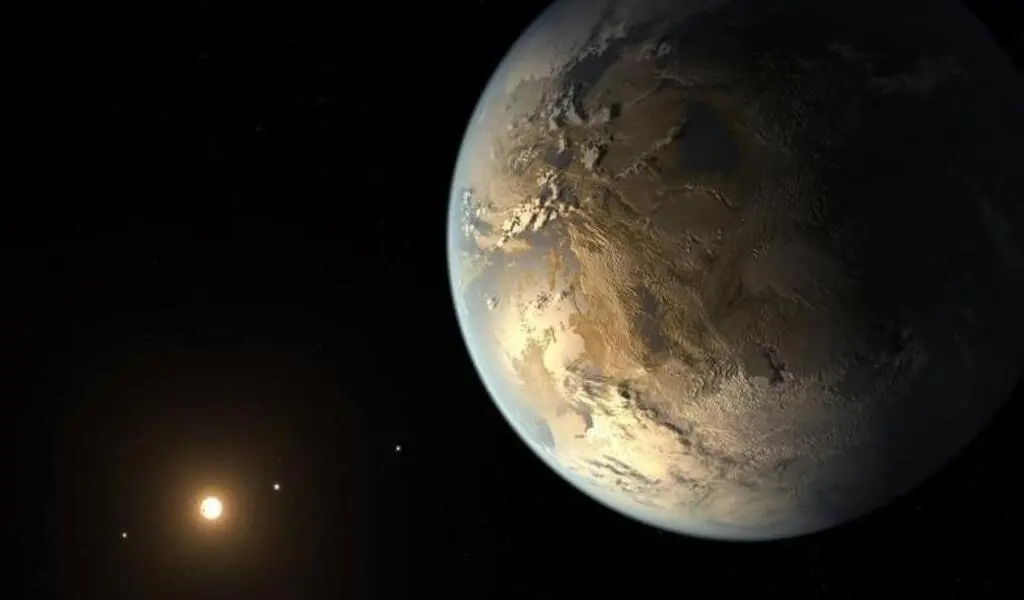
(CTN NEWS) – According to recent findings by the Webb Space Telescope, there appears to be a lack of atmospheric presence on one of the seven Earth-sized, rocky planets orbiting a distant star.
Webb Space Telescope said that doesn’t bode well for the rest of this solar system’s planets
On Monday, a group of scientists at Webb Space Telescope Found No Evidence Of An Atmosphere At 7th Earth-sized Planet conveyed that this development is not a positive sign for the other planets within our solar system.
This is particularly concerning for planets in the optimal range for containing water and potentially supporting life.
According to Sara Seager, an astrophysicist from the Massachusetts Institute of Technology who was not involved in the research, it is not necessarily a failure for the other planets. However, it remains to be seen.
The Trappist solar system, comprising seven planets similar to ours, has piqued astronomers’ interest since its discovery at a distance of merely 40 light-years.
In the realm of cosmology, the aforementioned distance can be considered relatively proximate; to be precise, a light-year encompasses approximately 5.8 trillion miles.

Three of the seven planets are in their star’s habitable zone, making this star system even more alluring
This particular star system boasts a remarkable feature, as three out of its seven planets have been found to orbit within the habitable zone.
This intriguing discovery adds to the allure of the system and its potential for further exploration and study.
According to the findings of the team led by NASA, it has been reported that there is a negligible presence of atmosphere at the planet’s innermost region.
The findings were officially released on Monday via the esteemed scientific publication, Nature.
According to Thomas Greene, the lead researcher at NASA’s Ames Research Center, the absence of an atmosphere would result in the absence of water and inadequate shielding from cosmic rays.
Regarding the remaining planets revolving around the diminutive and faint Trappist star, Greene expressed his reservations about their atmospheric composition.
He conveyed his opinion via email, stating that he would have been more sanguine about the presence of atmospheres in the other planets if the current one had one.
According to Seager, a researcher at MIT, in the event that the rocky planets revolving around ultracool red dwarf stars fail to meet expectations, the search for Earth-like planets around sun-like stars may be a protracted undertaking.
According to Greene, the absence of an atmosphere in the innermost planet of the Trappist system could be attributed to the intense solar radiation it receives, which is four times greater than what Earth receives from its sun.
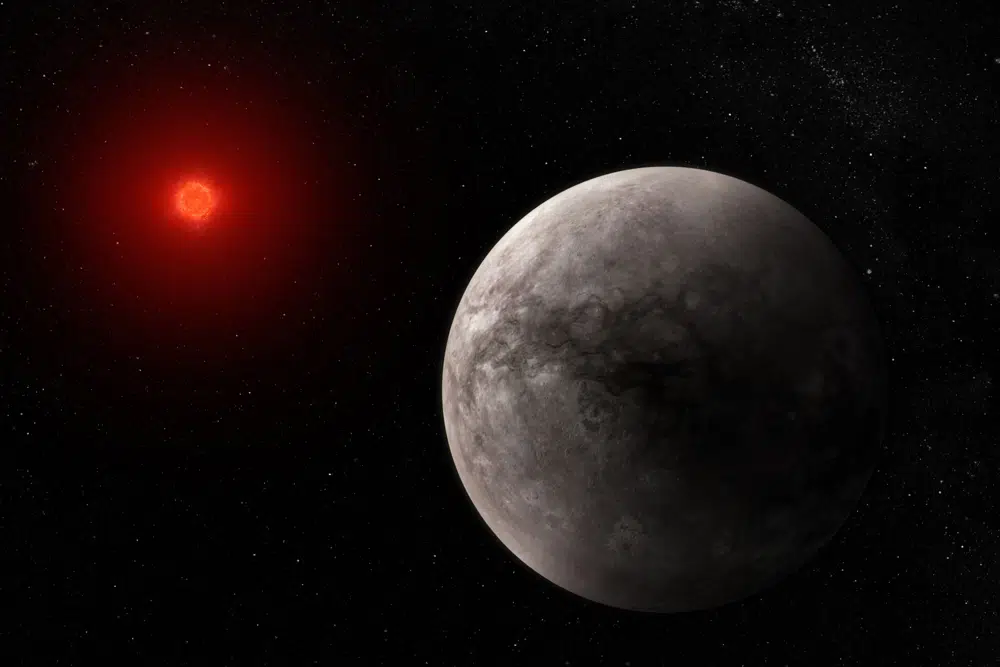
According to his team’s findings, the temperatures on the side of the planet constantly facing its star were recorded to be as high as 450 degrees Fahrenheit (230 degrees Celsius).
Utilizing Webb, the most extensive and potent telescope ever launched into space, American and French scientists successfully gauged the luminosity variation as the innermost planet transited behind its star.
This enabled them to approximate the quantity of infrared radiation emitted by the planet.
The European Space Agency has acknowledged the significance of Webb’s detection of the planet despite the minimal change in brightness due to the Trappist star’s luminosity being over 1,000 times greater than the planet’s.
This achievement marks a major milestone in the field.
Further observations are scheduled on the aforementioned planet and the other celestial bodies in the Trappist system.
Hubble was replaced by Webb in late 2021, 1 million miles (1.6 million kilometers) away
According to Taylor Bell, a member of the research team from the Bay Area Environmental Research Institute, it is possible that observing this planet through a different wavelength may reveal an atmosphere that is comparably less dense than our own.
However, the likelihood of such an atmosphere being sustainable remains uncertain.
According to Michael Gillon, a team member that identified the initial three Trappist planets in 2016, additional investigation may reveal the presence of an atmosphere, albeit one that differs from Earth’s.
He was not a participant in the mostrecent study.
According to Gillon, the study of rocky exoplanets is a relatively unexplored field, as current scientific knowledge is primarily derived from observations of the four rocky planets within our own solar system.
Webb, deployed to an observation post situated 1 million miles (1.6 million kilometers) away, debuted in late 2021.
It is widely regarded as the successor to the Hubble Space Telescope, which has been in orbit around Earth for over three decades.
Previously, the Trappist system was thoroughly examined for atmospheres by the Hubble and Spitzer Space Telescopes. However, conclusive outcomes were not obtained.
According to Julien de Wit, an expert from MIT who was not involved in the study, “the inner planets offer unique learning opportunities that differ from those presented by other planets.
This is just the beginning of our exploration, and much is to be discovered.”
RELATED CTN NEWS:
NASA is Training Four Humans to Live on Planet Mars this Summer
Augmented Reality vs Virtual Reality: What’s The Difference And Which Is Better?

Science
NASA Switches Off Instrument On Voyager 2 Spacecraft To Save Power
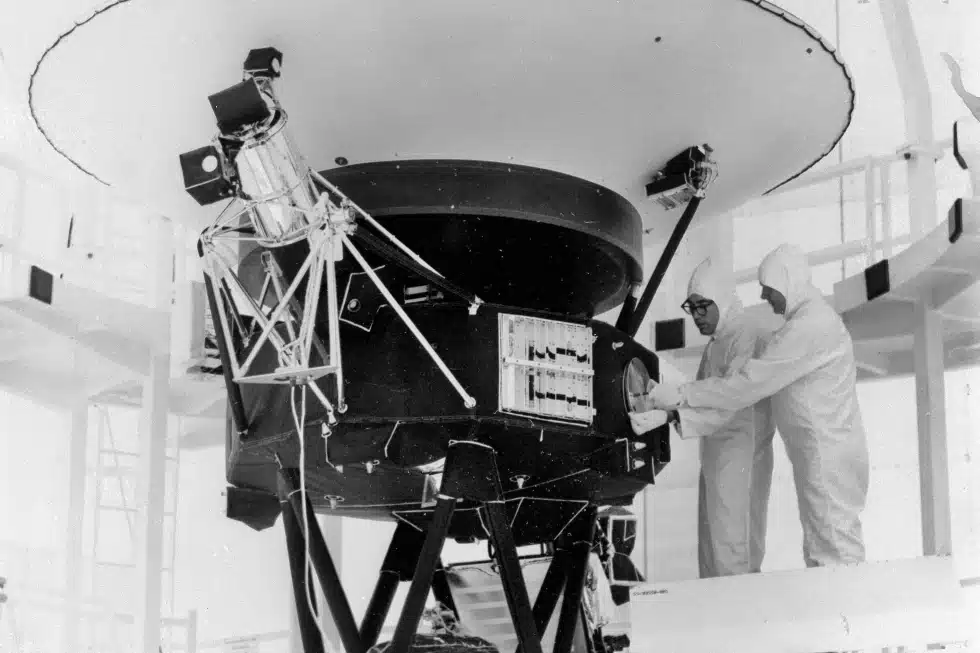
NEW YORK — To save power, NASA turned off another scientific equipment on its long-running Voyager 2 spacecraft.
NASA Switches Off Instrument On the Spacecraft To Save Power
The space agency announced on Tuesday that 2’s plasma science instrument, meant to study the movement of charged atoms, was turned off in late September to allow the spacecraft to continue exploring for as long as possible, which is estimated to be into the 2030s.
NASA turned off a suite of instruments on Voyager 2 and its twin, Voyager 1, after exploring the gas giant planets in the 1980s. Both are currently in interstellar space or the region between stars. The plasma instrument on Voyager 1 stopped working years ago and was finally shut off in 2007.
The remaining four instruments on 2 will continue to collect data on magnetic fields and particles. Its mission is to investigate the regions of space beyond the sun’s protective sphere.
NASA Switches Off Instrument On Voyager 2 Spacecraft To Save Power
It launched in 1977, is the only spacecraft to have visited Uranus and Neptune. It is now more than 12 billion miles (19.31 billion kilometers) from Earth. 1 is more than 15 billion miles (24.14 billion kilometers) beyond Earth.
SOURCE | AP
Science
Hurricane Kirk Could Cause Dangerous Surf Conditions Along The US East Coast
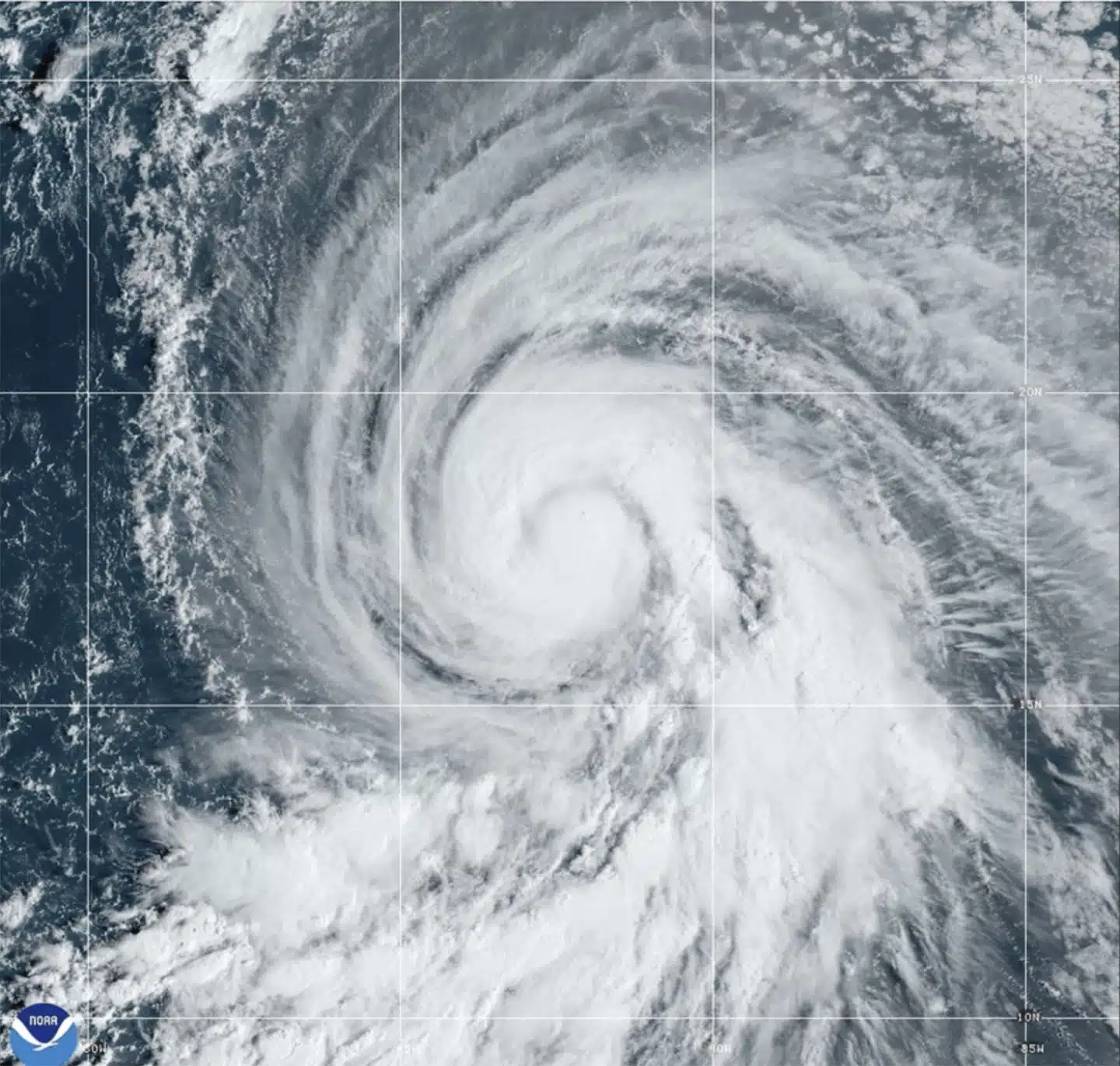
MIAMI — Hurricane Kirk’s waves could generate life-threatening surf and rip current conditions this weekend throughout the United States East Coast, as well as in Bermuda, the Greater Antilles, and the Bahamas, according to forecasters.
Kirk was a Category 3 hurricane in the middle Atlantic Ocean that might grow further but was predicted to stay away from land, according to the Miami-based National Hurricane Center on Thursday.
Hurricane Kirk Could Cause Dangerous Surf Conditions Along The US East Coast
Kirk-generated swells were forecast to reach parts of the Leeward Islands on Friday, Bermuda and the Greater Antilles on Saturday, and the East Coast and the Bahamas on Sunday, according to the center.
No coastal watches or warnings were in effect. The major storm was around 1,130 miles (1,820 kilometers) east of the Leeward Islands, with maximum sustained winds of 125 mph (205 km/h).
Meanwhile, Tropical Storm Leslie formed late Wednesday in the eastern Atlantic and is expected to strengthen into a hurricane in the following days, forecasters said. It was also not considered a threat to the land.
Hurricane Kirk Could Cause Dangerous Surf Conditions Along The US East Coast
The storm was about 540 miles (870 kilometers) southwest of Cabo Verde’s southernmost tip, with maximum sustained winds of 45 mph (75 kph), according to the center.
The storms raged in the Atlantic as rescuers in the United States Southeast sought for missing persons after Hurricane Helene struck last week, leaving a trail of death and devastation.
SOURCE | AP
Science
Giant Fossilised Footprint Of Dinosaur Found in China

(CTN News) – A team of palaeontologists believes they have discovered fossilized footprints of one of China’s largest raptors. The collection of five fossilized dinosaur footprints is half the length of a school bus.
The footprints were discovered in a dinosaur trackway in south-east China in 2020. Scientists believe dinosaurs walked over the muddy river during the Cretaceous period, leaving footprints. Some footprints have been preserved for tens of millions of years.
The dinosaur trackway was unearthed in Longxiang and is around the size of a hockey rink. Some of the footprints are unusually formed, with intact imprints of only two toes.
Fossilised footprint of megaraptor found in China

Giant fossil footprints lead to megaraptor dinosaur discovery in China
Raptors, or predatory birds, are often small and referred to as deinonychosaurs. For example, a Velociraptor is around the size of a turkey. Few raptors, such as the Utahraptor and Dakotaraptor, increased in size significantly, reaching lengths of 5 to 6 metres. The Triassic ichthyosaur was the largest raptor known until now.
According to the scientists, the predator would have attacked its prey with a pair of huge “killing claws” on each foot.
What scientists discovered recently in China is massive, far larger than the largest superpredator known to date.
Scott Persons of the College of Charleston in South Carolina, and his colleagues, added another large raptor to the list. They named it Fujianipus, and they believe it lived in East Asia some 96 million years ago.
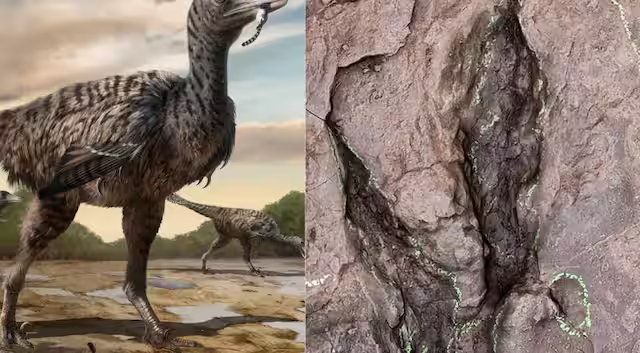
Scott Persons at the College of Charleston in South Carolina and his colleagues added another giant raptor to the list. They named it Fujianipus, and they say it lived in East Asia about 96 million years ago. Photograph:(Twitter)
Persons and his colleagues are currently working on areas of Fujianipus’ skeleton, therefore little is known. The investigators only discovered a few of its 36-centimetre-long imprints.
“Preservation conditions were right for footprints but not so great for bones,” Persons said. However, scientists are certain that the footprints belong to a raptor because each one contains the imprint of only two toes, which corresponds to the foot anatomy of raptors. Raptors generally have three toes, but they keep one off the ground to preserve the big claw at the tip from wear and tear.
People believe Fujianipus demonstrates that raptors had the ability to grow much larger and compete with the largest predatory dinosaurs on the landscape at the time – allosauroids, some of which exceeded 10 metres or more in length.
According to Persons, raptors had an advantage over allosauroids in terms of speed. However, without fossilized leg bones, the researchers cannot correctly measure Fujianipus’ speed.
-

 News4 years ago
News4 years agoLet’s Know About Ultra High Net Worth Individual
-
Entertainment2 years ago
Mabelle Prior: The Voice of Hope, Resilience, and Diversity Inspiring Generations
-
News11 years ago
Enviromental Groups Tell Mekong Leaders Lao Dam Evaluation Process Flawed
-

 Health4 years ago
Health4 years agoHow Much Ivermectin Should You Take?
-

 Tech2 years ago
Tech2 years agoTop Forex Brokers of 2023: Reviews and Analysis for Successful Trading
-

 Lifestyles3 years ago
Lifestyles3 years agoAries Soulmate Signs
-

 Entertainment3 years ago
Entertainment3 years agoWhat Should I Do If Disney Plus Keeps Logging Me Out of TV?
-

 Health3 years ago
Health3 years agoCan I Buy Ivermectin Without A Prescription in the USA?
